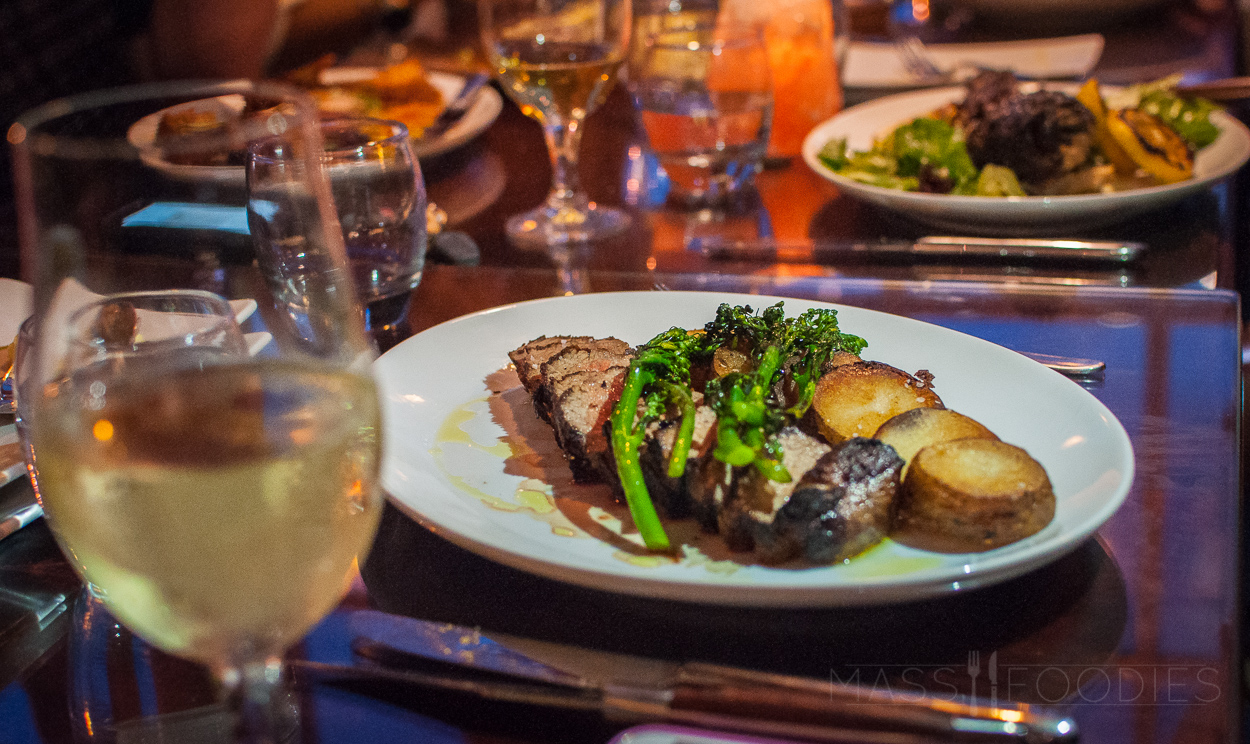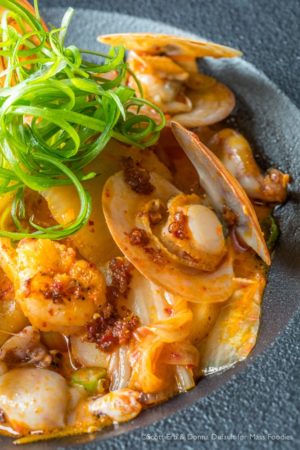
When I mention that I’m a nutritionist to strangers, the top response revolves around sharing information about their diets; and lately, it’s sounded something like this: “That’s awesome, I don’t do gluten, soy, dairy, nuts, or refined sugar.” My immediate thought process turns to why – is it due to an allergy, intolerance, or preference? There is a big difference between all three, yet all are impacting today’s restaurant scene and will continue to shape it in the future.
Food allergy rates are on the rise with recent statistics from the Food Allergy Research and Education (FARE) finding that up to 15 million Americans (5.9 million of them being children) have a food allergy. These numbers account for the 50% increase in food allergens over the past three decades. The top 8 most common food allergies are milk, eggs, shellfish, fish, tree nuts, peanuts, soy, and wheat; with peanuts being the most common food allergen, especially in children. An allergy, which is an autoimmune response, can be a life or death situation. In contrast, intolerance is a reaction to food that creates non-life threatening symptoms — we can tolerate it, but we might not enjoy what comes when we eat it. At the very end of the spectrum is a dietary preference, meaning people choose to eat the way that they do.
Most people don’t appreciate the effect that food allergies have until they are personally affected by one. The idea of shedding light on how food allergens impact us not only mentally and physically, but all the way down to how it’s shaping the food industry, is highlighted in “The Peanut Problem” on Netflix’s documentary series Rotten. The episode explores food allergies on a scientific level; and how the rapid increase in food allergy cases takes a hit on the food industry, from farmer to chef. Take a farmer for instance – the rise in food allergies, such as peanuts or wheat, decreases the need for the crop, putting the harvest in question. Now for the chef – if a restaurant isn’t allergen friendly then it is closing its doors to people who have a food allergy, as they can’t eat at their restaurant.
How important is it for chefs and restaurants to be allergen friendly? Rotten contributor Chef Ming Tsai was one of the first chefs to develop an allergen-friendly environment in his restaurant using an extensive spreadsheet of ingredients, known as the Food Allergy Bible, in all dishes. He did this not only due to the demand from the public but also due to his son’s food allergies. Ming sees it as an investment that pays off, as customers who are able to eat at his restaurant go the extra mile to come back and recommend it to others.

Chefs agree that the rise in allergies increases the need to incorporate an allergen-friendly environment in their restaurants. This starts with the menu planning and ends in efforts made in the kitchen for allergen safety. The safest restaurants to visit with an allergy will be ones that make their food from scratch. Ellen Benson, general manager of simjang, stresses the importance of taking allergies into account before approaching a menu item. She states that they “are always considering if that allergen can be avoided or not and if it has the possibility of cross-contaminating other products around it.” Another strategy that can be helpful to ensure customer safety and satisfaction is adding transparency about menu items and ingredients sourced, something that Armsby Abbey prides itself on doing.
Rotten continues to highlight how “food allergies have made the dinner table a high-risk environment, and it’s the chefs who have to navigate that minefield every day and night.” Yet before the chefs can do so, it’s up to the staff in the front of the house to be the main line of defense. The importance of staff awareness and education is crucial, which is echoed by local Central MA chefs. At Armsby Abbey, the staff is allergen certified through Serv Safe and are educated daily with pre-meal meetings. Additionally, they host classes throughout the year to promote awareness. At Lock 50, “Front of the house staff reports to the kitchen before placing any orders with potential food allergies. All chefs and cooks are aware of any potential common food allergies and take special care to keep them properly stored and to sanitize all equipment and hands after handling.”
A common issue that can make it even more difficult on the chef, restaurant, and those with food allergies is the diner who has a dietary preference yet states they have an allergy. Thinking about the extra time, effort, and money that goes into allergy safety and preparation, it can be extremely frustrating when a diner states they have an allergy when in reality they have a preference. An oft-expressed example is when someone requests something allergen-freer free, then orders something with that allergen and eats it (i.e. being “gluten-free” and then insisting on ordering a gluten-containing cookie for dessert.) This not only makes it confusing for the restaurant staff but also the general population. The consensus among restaurants, as explained by Executive Chef Tim Russo of Lock 50, is that it’s important to know the difference. He expressed that “if a guest has an allergy, much caution is taken by the staff to protect the safety of the guest. It is important for the guests to specify if they have allergies or if they just have dietary preferences.” To combat this, Benson states that at simjang “we often ask if it’s an intolerance, preference of allergy so we are able to approach them as serious as they are.”
Since the rise of food allergies, preferences, and health trends, we’ve started to see allergen-friendly alternatives that deliver great quality food; all the way down to items that you wouldn’t expect to taste as good as they do. Chefs are not using allergies as a restriction on their creative talents and menus. This is amazing, especially if you’ve felt like you’ve been missing out on your favorites due to an allergy. As Executive Chef Tim Russo explains, “no matter what the case may be, we always do our best to make sure our guests have plenty of enjoyable options on our menu without sacrificing their dietary needs or putting themselves at risk with an allergic reaction.” If you have a wheat allergy, you might think that restaurant classics like breads and pizza are off limits or that alternatives won’t measure up to the real thing; yet restaurants like The Boynton and The Rail Trail Flatbread Co. do an excellent job at creating alternatives attracting the gluten-free crowd. Other restaurants are highlighting efforts to ensure allergy safety by having designated allergen friendly spaces, such as having separate gluten-free fryers, which can be seen at restaurants like Maddi’s Cookery and Taphouse and simjang. It’s admirable to see restaurants in Central Mass taking these steps into account all while not harming the integrity of the chefs’ creations.
So how can you go about navigating the restaurant scene if you have an allergy? My main tip involves doing research and asking questions. Your best bets will be to visit restaurants that cook meals from scratch due to flexibility — if you have an allergy they can easily remove that ingredient. When you get to your restaurant of choice, be transparent with the wait staff and explain your allergy, intolerance, or dietary restriction situation. What are your go- to restaurants that are allergen-friendly?
